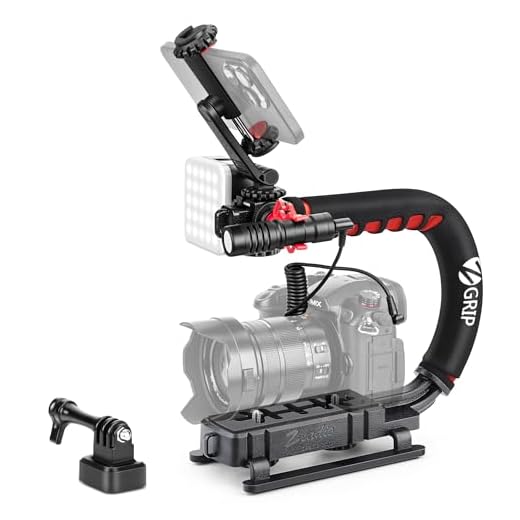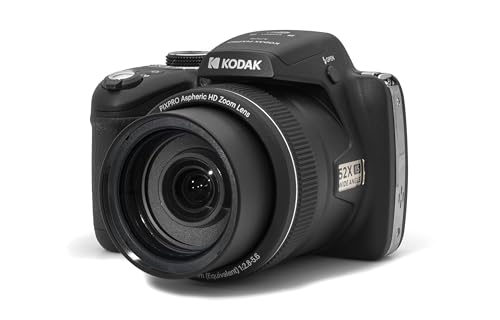




Point and shoot digital cameras are compact, convenient, and perfect for capturing those spontaneous moments. However, holding a point and shoot camera properly can make a significant difference in the quality of your photos. Whether you’re a beginner or a seasoned photographer, mastering the art of holding a point and shoot digital camera is essential for achieving sharp, well-composed shots.
When it comes to holding a point and shoot camera, stability is key. One common mistake is gripping the camera too tightly, which can result in shaky or blurry photos. Instead, try to hold the camera with a relaxed grip, using both hands for support. Keep your elbows close to your body to minimize movement, and use your body as a brace for added stability.
Another important aspect of holding a point and shoot camera is finding the right balance between comfort and control. Experiment with different hand positions and angles to see what works best for you. Remember to keep your fingers away from the lens to avoid accidentally covering it and causing unwanted shadows in your photos.
Mastering the Basics
When it comes to holding a point and shoot digital camera, there are a few key basics to keep in mind to ensure steady and clear shots. Here are some tips to help you master the basics:
1. Proper Grip
Hold the camera with both hands, using your right hand to grip the camera while your left hand supports the bottom of the camera. This will help stabilize the camera and reduce camera shake.
2. Stand Firm
Stand with your feet shoulder-width apart and keep your elbows close to your body to create a stable base for shooting. This will help you avoid camera shake and capture sharp images.
By mastering these basic techniques, you can improve the quality of your photos and make the most of your point and shoot digital camera.
Proper Grip Techniques
When holding a point and shoot digital camera, it is important to maintain a stable grip to ensure sharp and clear photos. Here are some proper grip techniques to follow:
| 1. Two-Handed Grip: | Hold the camera with both hands, one hand gripping the camera body and the other supporting the lens. This provides better stability, especially in low-light conditions. |
| 2. Finger Placement: | Keep your index finger on the shutter button while supporting the camera with the other fingers. Avoid accidentally pressing the buttons when adjusting your grip. |
| 3. Elbows In: | Tuck your elbows close to your body to create a stable base for the camera. This helps reduce camera shake and allows for smoother shots. |
| 4. Use a Wrist Strap: | Attach a wrist strap to the camera to prevent accidental drops. This adds an extra layer of security while shooting on the go. |
Understanding Camera Settings
Before you start using your point and shoot digital camera, it’s important to understand the different settings and options it offers. By familiarizing yourself with the camera settings, you can take better photos and make the most of your device.
Resolution: The resolution setting determines the quality of the images you capture. Higher resolution settings result in larger file sizes and better image quality, while lower resolutions are suitable for sharing photos online.
Exposure: Understanding exposure settings such as aperture, shutter speed, and ISO can help you control the amount of light that enters the camera. Adjusting these settings allows you to capture well-exposed photos in various lighting conditions.
White Balance: White balance settings help you achieve accurate color reproduction in your photos. By selecting the appropriate white balance setting for the lighting conditions, you can ensure that your images look natural and true to life.
Focus: Learning how to control the focus settings on your camera is essential for capturing sharp and clear images. You can choose between manual and autofocus modes to ensure that your subject is in focus.
Scene Modes: Many point and shoot cameras offer scene modes that automatically adjust settings for specific shooting scenarios, such as portraits, landscapes, or night scenes. Experimenting with these modes can help you achieve better results in different situations.
By understanding and experimenting with your camera settings, you can enhance your photography skills and take stunning photos with your point and shoot digital camera.
Finding the Right Angle
When taking photos with a point and shoot digital camera, finding the right angle is key to capturing a great shot. Experiment with different angles to see what works best for your subject. Try shooting from above, below, or from the side to add interest to your photos.
Tip: Get down to the level of your subject for a more dynamic and engaging shot. This can create a more intimate and personal feel to your photos.
Remember: Don’t be afraid to try different angles and perspectives to find the one that best highlights your subject and tells the story you want to convey through your photos.
Using Natural Light
When using a point and shoot digital camera, natural light can be your best friend. Here are some tips for utilizing natural light to enhance your photos:
- Shoot during the golden hours – the hour after sunrise and the hour before sunset provide soft, warm light that can make your photos look stunning.
- Avoid harsh midday sun – the direct overhead sun can create harsh shadows and blown-out highlights. Try to shoot in shaded areas or use a diffuser to soften the light.
- Use backlighting – positioning your subject with the light behind them can create a beautiful halo effect and add depth to your photos.
Capturing the Perfect Shot
When capturing the perfect shot with your point and shoot digital camera, there are a few key tips to keep in mind:
- Check your camera settings: Make sure your camera is set to the appropriate mode for the scene you are shooting, whether it’s landscape, portrait, or macro.
- Focus on composition: Pay attention to the framing of your shot and consider the rule of thirds to create a visually appealing image.
- Use natural light: Whenever possible, take advantage of natural light to enhance your photos. Avoid using the camera’s flash unless absolutely necessary.
Additional Tips:
- Experiment with angles and perspectives to add interest to your photos.
- Take multiple shots to increase your chances of capturing the perfect moment.
- Practice patience and be prepared to take your time to get the shot just right.
FAQ
What are the basic steps to hold a point and shoot digital camera correctly?
When holding a point and shoot digital camera, make sure to use both hands for stability. Hold the camera with your right hand and support it with your left hand underneath. Keep your elbows close to your body to minimize camera shake.
Is there a specific way to position my fingers on the camera when taking a photo?
Yes, it is recommended to place your index finger on the shutter button and your other fingers supporting the camera body. This way, you can easily press the shutter button without accidentally moving the camera.
How can I ensure my photos are not blurry when using a point and shoot digital camera?
To prevent blurry photos, make sure to hold the camera steady and press the shutter button gently to avoid shaking the camera. Additionally, use a higher shutter speed and consider using a tripod for more stability.
Are there any tips for improving my grip on a small point and shoot digital camera?
If you find it challenging to grip a small camera, you can try using a camera strap or attach a grip accessory to the camera. This will provide you with a more secure hold and help prevent accidental drops.






